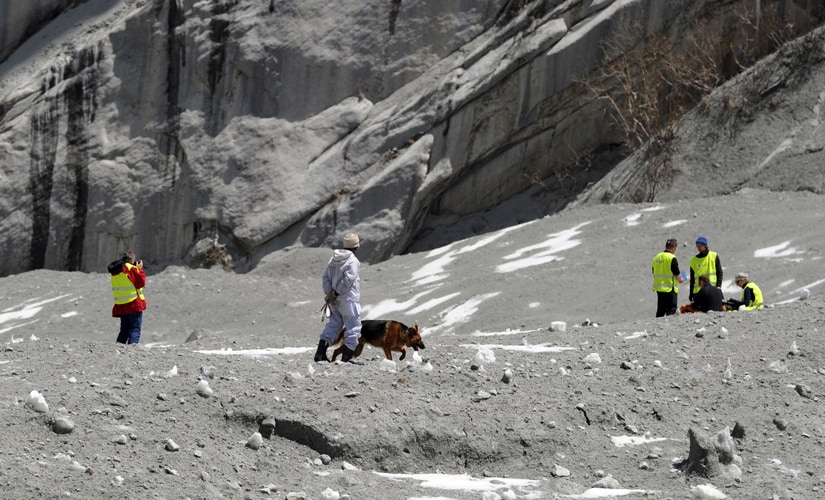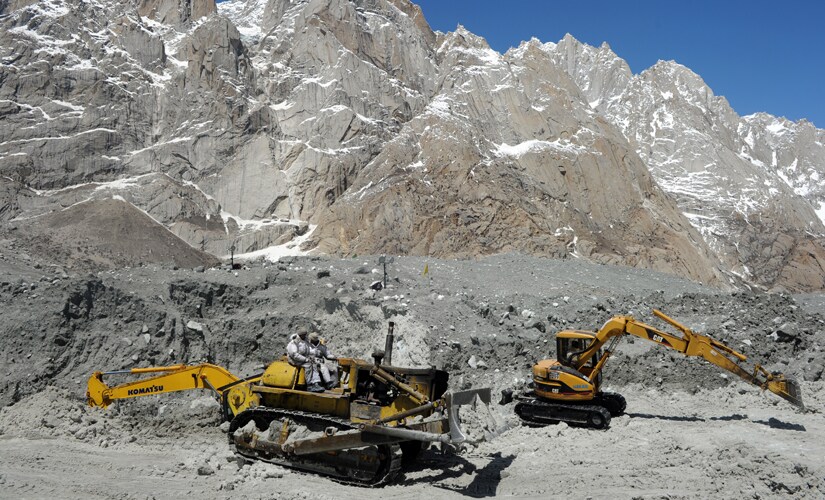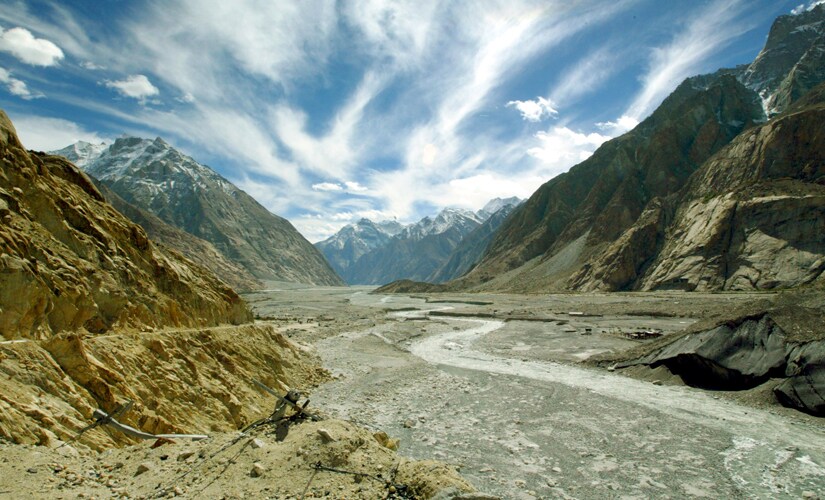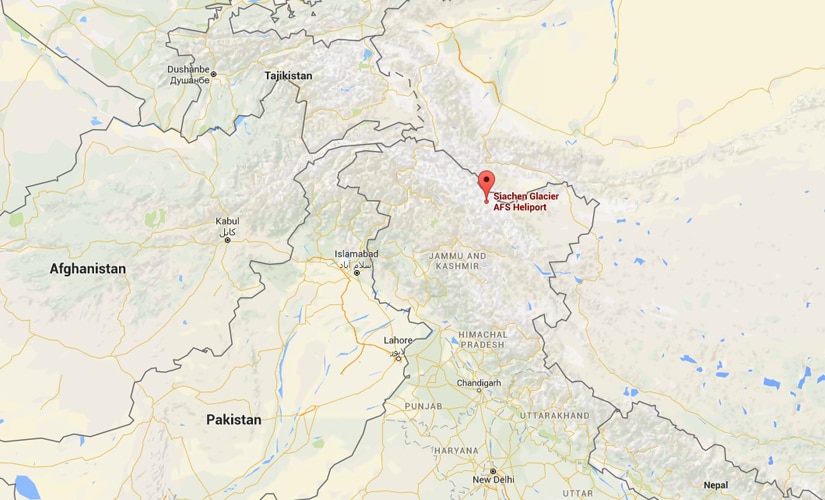The avalanche at the Siachen glacier, in which ten army soliders were killed, is the latest chapter of a three-decade old saga of a frozen conflict on world’s highest battleground. Since 1984, the glacier has been fiercely contested by both India and Pakistan, with massive amounts of resources and manpower spent to fight what many say is a pointless fight. In one of the more colourfully worded descriptions of the protracted confrontation, Stephen P Cohen-an expert on South Asian security-called it a ‘struggle of two bald men over a comb.’ Here’s a closer look at the avalanche and the story of geopolitical struggle behind it: Lives Lost Ten soldiers lost their lives after a massive avalanche ripped off an army post at the glacier. According to a report in Firstpost, immediately after the news of the avalanche broke, it was clear that there was very little hope of finding survivors. The spot is at a staggering 19,600 feet above sea level. Following the incident, Prime Minister Narendra Modi, Vice-President Hamid Ansari and Army chief Dalbir Singh have expressed their condolences. [caption id=“attachment_2613770” align=“alignnone” width=“825”]
 The Siachen Glacier. Getty images[/caption] India-Pak standoff Just four years ago, the Siachen glacier had seen an even bigger avalanche tragedy, on the Pakistani side of the standoff. More than 120 Pakistani soldiers died after being buried under the snow. This could have been one of the reasons why Pakistan offered help for rescue operations earlier this week, which India rejected. [caption id=“attachment_2613774” align=“alignnone” width=“825”]
The Siachen Glacier. Getty images[/caption] India-Pak standoff Just four years ago, the Siachen glacier had seen an even bigger avalanche tragedy, on the Pakistani side of the standoff. More than 120 Pakistani soldiers died after being buried under the snow. This could have been one of the reasons why Pakistan offered help for rescue operations earlier this week, which India rejected. [caption id=“attachment_2613774” align=“alignnone” width=“825”]
 The 2012 avalanche. Getty images[/caption] Cartographical aggression The conflict has its roots in 1984, when army mountaineer Col Narendra Kumar claimed that Pakistan had committed a ‘cartographical aggression’ found that Pakistan had incorrectly marked the Line of Control. The LoC was not marked beyond point NJ 9842, which led to the confrontation.
Pakistani newspaper Dawn claims
that in 1984, Indian troops ‘quietly deployed’ troops to the area, after which Pakistan deployed soldiers to prevent the Indian troops from advancing. What is not in dispute, however, is that the area is extremely harsh terrain not fit for human habitation. [caption id=“attachment_2613776” align=“alignnone” width=“825”]
The 2012 avalanche. Getty images[/caption] Cartographical aggression The conflict has its roots in 1984, when army mountaineer Col Narendra Kumar claimed that Pakistan had committed a ‘cartographical aggression’ found that Pakistan had incorrectly marked the Line of Control. The LoC was not marked beyond point NJ 9842, which led to the confrontation.
Pakistani newspaper Dawn claims
that in 1984, Indian troops ‘quietly deployed’ troops to the area, after which Pakistan deployed soldiers to prevent the Indian troops from advancing. What is not in dispute, however, is that the area is extremely harsh terrain not fit for human habitation. [caption id=“attachment_2613776” align=“alignnone” width=“825”]
 A signboard at the Siachen glacier. Reuters[/caption] Frozen Conflict The majority of deaths which have taken place in Siachen have taken place not because of armed combat, but because of the weather conditions. In temparatures which can go down to -50 degrees celsius, soldiers suffer frostbite, a shortage of oxygen and a loss of appetite.
A New York Times article
quoted a Pakistani solider as saying, “I saw people getting lost, just looking at space…The isolation was affecting their brain.” [caption id=“attachment_2613782” align=“alignnone” width=“825”]
A signboard at the Siachen glacier. Reuters[/caption] Frozen Conflict The majority of deaths which have taken place in Siachen have taken place not because of armed combat, but because of the weather conditions. In temparatures which can go down to -50 degrees celsius, soldiers suffer frostbite, a shortage of oxygen and a loss of appetite.
A New York Times article
quoted a Pakistani solider as saying, “I saw people getting lost, just looking at space…The isolation was affecting their brain.” [caption id=“attachment_2613782” align=“alignnone” width=“825”]
 Most of the deaths have been becasue of the harsh terrain. Reuters[/caption] Bone of contention Even in the present day, India and Pakistan publish different maps of the region, as pointed out in this
BBC article.
The Siachen glacier is widely known as the world’s highest battlefield. Pakistan has proposed to demilitarise the region and declare it as a ‘Peace Park’. This idea was first mooted at the 5th World Parks Congress in Durban in 2003. However,
an article in Indian Defence Review
argues that the glacier is strategically important for India and that adequate infrastructure is now in place which is necessary for the terrain. [caption id=“attachment_2613784” align=“alignnone” width=“825”]
Most of the deaths have been becasue of the harsh terrain. Reuters[/caption] Bone of contention Even in the present day, India and Pakistan publish different maps of the region, as pointed out in this
BBC article.
The Siachen glacier is widely known as the world’s highest battlefield. Pakistan has proposed to demilitarise the region and declare it as a ‘Peace Park’. This idea was first mooted at the 5th World Parks Congress in Durban in 2003. However,
an article in Indian Defence Review
argues that the glacier is strategically important for India and that adequate infrastructure is now in place which is necessary for the terrain. [caption id=“attachment_2613784” align=“alignnone” width=“825”]
 Image courtesy: Google maps[/caption]
Image courtesy: Google maps[/caption]
Frozen in conflict: Here's a look at the protracted battle over Siachen
Neerad Pandharipande
• February 8, 2016, 10:37:54 IST
The avalanche at the Siachen glacier, in which ten army soliders were killed, is the latest chapter of a three-decade old saga of a frozen conflict.
Advertisement
)
End of Article